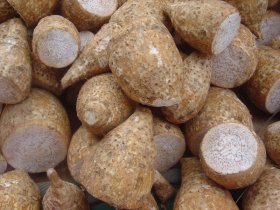Taro

  | Taro in TCM:Explore the properties of Taro according to Chinese
Nutrition and Traditional Chinese Medicine (TCM):
Temperature: neutral
Channels: ST, SP
Flavors: sweet, pungent
Special Properties:
clears heat, reduces swelling
In general the ancient Chinese medical texts cite that Taro enters the stomach and spleen. Furthermore Taro is considered to be neutral in temperature. The flavor is sweet and pungent.
Taro helps to clear heat and reduce swelling, and it is particularly beneficial for the spleen. However, eating too much taro can cause stomach pain and food stagnation. [22]
An old fold remedy for swollen lymph glands, nodules, scrofula, goiter, and tuberculosis is to dry taro root, grind to a powder, then take equal parts of water chestnuts and jellyfish and boil into tea. Take the tea and mix with the taro root powder. Roll into small pills the size of mung bean and take two tablespoons of pills three times daily.[22]
Disclaimer: In accordance with our terms of service, by using this web site you agree that none of the information found on this web site constitutes medical advice. You should always consult your doctor before trying any particular food or herbal remedy to treat disease.
Folk remedies presented on this site are designed to address specifc TCM diagnoses, and are not one-size-fits-all. If you would like to learn more about Traditional Chinese Medicine (TCM) and how it relates to Chinese Nutrition, you can book in a free call with a licensed professional. There is no obligation to purchase.
[CLICK HERE for your free INITIAL CONSULTATION] |

